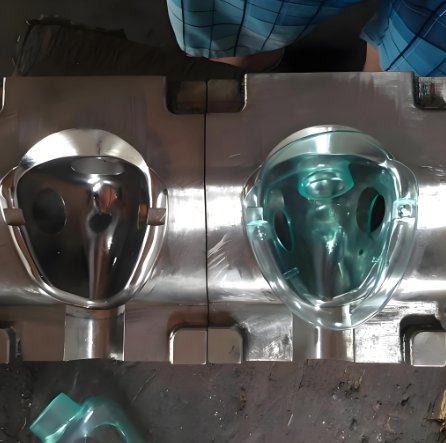
Medical devices require small, precise components. Medical injection molding produces these parts with extreme accuracy. Mold makers use advanced techniques to meet strict medical standards. Micro injection molding allows for miniaturization. This improves efficiency and patient care.
What Is Micro Injection Molding?
1. Definition
Micro injection molding creates very small plastic parts. These parts have precise dimensions. Some are only a few millimeters in size.
2. Importance in Medical Manufacturing
Medical devices keep getting smaller. Miniaturization improves function and comfort. Mold makers must ensure accuracy and consistency.
3. Key Characteristics
- High precision.
- Small part sizes.
- Tight tolerances.
- Complex geometries.
Materials Used in Micro Medical Injection Molding
1. Biocompatible Plastics
- Safe for human contact.
- Used in implants and surgical tools.
2. Liquid Silicone Rubber (LSR)
- Flexible and durable.
- Ideal for tubing and seals.
3. High-Temperature Thermoplastics
- Withstand sterilization.
- Used for surgical instruments.
4. Radiopaque Materials
- Visible in X-ray imaging.
- Essential for catheters and implants.
5. Antimicrobial Plastics
- Reduce bacterial growth.
- Improve hygiene in medical settings.
Key Techniques in Micro Injection Molding
1. Multi-Shot Molding
- Molds multiple materials in one cycle.
- Improves part function and strength.
2. Overmolding
- Covers one material with another.
- Creates soft-touch grips on devices.
3. Insert Molding
- Embeds metal or electronics into plastic.
- Used for sensors and microelectronics.
4. Hot Runner Systems
- Delivers precise material flow.
- Reduces waste and defects.
5. Cleanroom Molding
- Prevents contamination.
- Meets FDA and ISO standards.
Applications of Micro Injection Molding in Medicine
1. Surgical Instruments
- Handles and grips for micro tools.
2. Implantable Devices
- Pacemaker components and stents.
3. Drug Delivery Systems
- Micro pumps and inhaler parts.
4. Diagnostic Equipment
- Testing cartridges and housings.
5. Catheters and Tubing
- Thin, flexible tubing for fluid delivery.
Challenges in Micro Medical Injection Molding
1. High Precision Requirements
- Small errors cause defects.
- Requires advanced mold maker expertise.
2. Material Flow Control
- Micro parts need consistent injection pressure.
- Uneven flow leads to defects.
3. Tight Tolerances
- Parts must fit perfectly in medical devices.
- Requires advanced mold designs.
4. Cost of Tooling
- Micro molds are expensive to make.
- Requires special equipment.
5. Regulatory Compliance
- Must meet strict medical standards.
- FDA and ISO approvals take time.
How Mold Makers Ensure Precision in Micro Molding
1. High-Precision Mold Design
- Uses advanced CAD software.
- Designs ultra-small cavities.
2. Micro CNC Machining
- Produces detailed mold features.
- Ensures perfect part dimensions.
3. Quality Control and Testing
- Uses laser measurements.
- Ensures zero defects.
4. Rapid Prototyping
- Tests molds before mass production.
- Saves time and costs.
Advantages of Micro Injection Molding
1. High Accuracy
- Produces detailed, complex shapes.
- Ensures precise fit in medical devices.
2. Cost-Effective for High Volumes
- Reduces production costs.
- Ideal for mass manufacturing.
3. Sterilization Compatibility
- Materials withstand heat and chemicals.
- Safe for medical use.
4. Lightweight Components
- Small parts reduce device weight.
- Improves patient comfort.
5. Reduced Material Waste
- Advanced molding reduces excess plastic.
- Supports sustainability.
Future Trends in Micro Injection Molding
1. AI and Automation
- Improves production efficiency.
- Reduces human error.
2. Smart Materials
- Self-healing and bio-absorbable plastics.
- Improves medical device performance.
3. Nanotechnology Integration
- Creates ultra-small medical sensors.
- Expands treatment possibilities.
4. Sustainable Bioplastics
- Reduces environmental impact.
- Supports green manufacturing.
5. 3D Printing and Injection Molding
- Hybrid manufacturing for medical innovation.
- Allows custom micro devices.
Medical injection molding advances medical technology. Mold makers play a key role in producing micro medical components. Precision techniques ensure safety, efficiency, and compliance. Micro molding continues to shape the future of medical devices.
